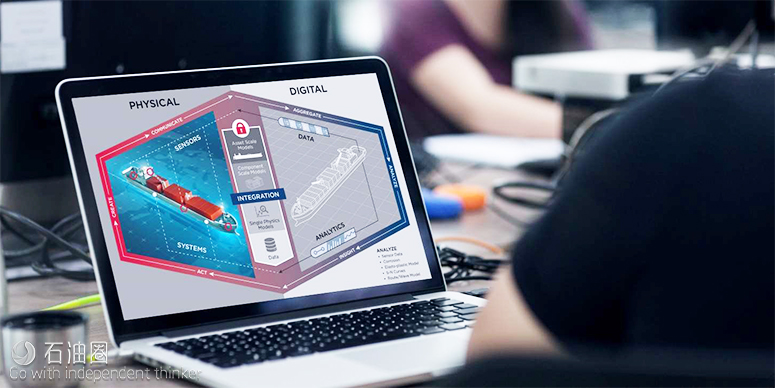The current state of the offshore industry with lower oil prices is driving owners and operators to contain expenses based on this new norm. With over 200 Floating Production Storage and Offloading (FPSO) units in operation, reducing operational costs (OPEX) is a common thread across the industry and is often a key item in operator’s initiatives seeking improved financial results.
FPSOs are complex units that require a significant amount of inspections to ensure emerging degradation is identified early and associated action taken to maintain the structural and mechanical integrity. These inspections are often driven by international and statutory regulations or by classification rules, both containing prescriptive requirements to address periodicity and scope of inspections. Typically, FPSOs are required to have their structural aspects, mooring system and machinery systems inspected on yearly intervals with a limited scope, and inspections of a larger and more encompassing scope are carried out every five years. Drydocking is also required to be carried out every five years to allow a close inspection of the underwater part of the hull, although a large number of FPSOs utilize an option that allows underwater inspection to be performed in lieu of drydocking by using different inspection techniques such as remote inspection vehicles or divers.
Safely executing this inspection regime requires a few measures to be taken that may cause disruption of the normal operations of the unit, which in turn reflects in disruption of the production pattern. Inspection plans require operators to open hull tanks and other compartments to allow access to inspection personnel, often requiring the use of additional measures such as providing ventilation, installation of scaffolds, use of rafts, etc. Similarly, machinery and systems are required to be inspected and tested out of normal operation scheme, which may cause impact on normal day-to-day activities on board. Reducing the impact on operation and production of the FPSOs will directly reduce OPEX and therefore will be an important component in achieving owners’ and operators’ main target of improved profitability and better financial results while continuing to operate safely.
Recognizing the value of incorporating digital technology, data analytics, and advanced inspection technologies to prepare for current and future challenges, ABS is developing a condition-based class solution. The primary objective of ABS condition-based class is to provide a less intrusive class experience through a closer alignment with ongoing operation and maintenance activities. It leverages data and digital technologies to provide greater insights into the condition of the asset to optimize inspection activities, support classification decision-making and provide greater flexibility than the traditional prescriptive inspection requirements.
This approach builds from the same concepts as the Risk-Based Inspection (RBI) regime that has already been developed and implemented by the industry to address some of these challenges. RBI determines the inspection intervals and scope based on the calculated risk profile of the structural elements in addition to other historical data. The condition-based class approach incorporates digital technologies and additionally extends consideration to machinery to provide a holistic solution.
As part of the condition-based class approach, ABS has defined a digital asset framework that lays out the capabilities that support the end-to-end process – from data collection and pre-processing, to a digital twin that maintains and analyzes the data, to visualizations and outputs that support riskbased decision making. Throughout this process, digital technologies and data science are the enablers for the transition to an informed, targeted and predictive classification model.
DATA SCIENCE DRIVES INFORMED DECISION-MAKING
The first stages of the digital asset framework are data collection and pre-processing. Conditionbased class utilizes various data received from the offshore vessel or unit as well as data from the environment in which it is operating. This data is collected over the life of the unit, from the early days of basic design through the operational phase.
Example of data to be collected includes:
Original design documentation: these drawings, analyses and calculations originated in the early phases of the project provide the basis of design used to define the characteristics of the unit. These documents will provide important information such as functional and technical specifications, operational requirements, material properties, equipment 4 | OFFSHORE FLOATING PRODUCTION UNITS IN THE DIGITAL ERA specification and performance requirements, as well as structural main characteristics that include strength and fatigue information.
Record of modifications, addition and removal of components: it’s known that offshore units often go through several modifications throughout the operational life that may change the original design characteristics.
Inspection records: inspection reports, classification survey reports, measurement data, plate gauging information, and other information collected from previous inspection campaigns.
Environmental data: data acquired from offshore buoys, weather systems, and other industry sources. Included in this data package would be information on wind, current, waves, air temperature and barometric pressures, water temperature, as well as any other relevant information.
Operational data: operational data includes information related to the operational phase that impacts the overall performance of the asset, such as loading conditions, loading and offloading pattern, offloading frequency, offloading volumes, production pattern, as well as other more common data such as temperatures, pressures, flow, levels, etc.
Sensor Data: data collected from both machinery and hull sensors installed on the unit, system health monitoring reports from OEMs and other service providers, and any other information coming from instrumentation.
The data collected goes through a pre-processing stage to support the analyses that will facilitate the decision-making process. Data pre-processing consists of data quality checks as well as data verification and validation activities. The data is cleaned and organized to purge any unnecessary, incomplete or inaccurate data prior to use for analytics.
STRUCTURAL DIGITAL TWIN ALLOWS DEEPER INSIGHT THROUGHOUT ASSET LIFECYCLE
At the center of the digital asset framework is the digital twin, which is the virtual representation of the physical asset, as well as its associated processes, systems and information. The digital twin is continuously updated throughout the asset lifecycle through a combination of the collected data, engineering models, and data analytics.
The digital twin provides a platform for information management and collaboration, where subject matter experts, managers, and all other decision makers share a common understanding of the asset’s current condition to support the decision-making process.
By enhancing information management and collaboration, a digital twin can enable:
Single source of truth for all relevant data, analyses and models available at any time and kept current throughout the lifecycle of the asset
Controlled sharing of data, models, and updated asset information between stakeholders ? Support decision makers with operational decisions by providing near real-time conditions of the assets and the capability to simulate possible future states based on planned operations
Inform maintenance and inspection planning based on actual asset state and risk profile
PREDICTIVE ANALYTICS ENABLES CONDITION-BASED INSPECTIONS
Once a single source of truth has been established for the asset, the next step is to better forecast the evolution of future risks. Data science enables the development of a predictive analytics process that supports the ultimate goal of shifting from the calendar-based, prescriptive inspection regime to a data-informed, condition-based inspection model.
The predictive analytics process focuses on forecasting the future anticipated conditions of the asset to make informed decisions as to the necessary inspection regime. Some of the characteristics of this predictive model are:
Degradation forecast: data acquired from the unit allows to predict the degradation levels based on degradation patterns identified from the data.
Forward-looking decision-making: analytics models to predict degradation levels support operators and decision-making on necessary activities to proactively address the degradation of critical elements.
Operational adjustments: the results of predictive analytics offer a framework to allow operators to adjust the production profile, logistics and other supporting activities in order to gain efficiencies and improve productivity.
DATA ANALYSIS GUIDES A TARGETED INSPECTION REGIME
The final stage of the framework is to use the analysis of the data described above to enable the development of an inspection regime that is targeted to the critical elements. The degradation forecast and associated determined risk provides guidance on the scope and frequency of the inspections as well as inspection sequencing, enabling operators to apply an alternative inspection regime rather than inspecting according to the prescriptive pre-determined frequency. The data streams being collected from the asset also provide triggers that alert to deviations from the degradation forecasts to indicate if changes to the inspection plan or specific actions need to take place. The main objectives of the resulting inspection regime are:
Increase availability and flexibility: increase operational availability of the asset by better aligning inspection activities with the asset operations while maintaining the safety of the unit.
Improve efficiency and productivity by using digital capabilities to automate portions of the workflow.
To accomplish these objectives, some of the items to be considered are:
Focused inspections: By focusing on the critical elements determined by the data analysis and risk assessment, operators may be able to reduce the impact of inspections on the production as well as organize resources and logistics with more flexibility.
Alternative means of verification: Digital technologies and advanced inspection techniques are beginning to enable alternative means of verifying the condition of critical elements that are less intrusive than traditional approaches.
Management of persons on board: this is a constant challenge due to limitations in number of berths available to accommodate the additional contingent of people required to perform inspections. Using the results of data analysis, maintenance activities that require technicians on board, such as painting and cleaning activities, will benefit from a streamlined and focused inspection regime.
The digital capabilities in this framework also support the development of maintenance and inspection programs that target onboard activities to specific aspects of the unit:
Machinery Condition Monitoring program: this program can be implemented for machinery considering data collected from the asset to determine when maintenance activities are required based on the condition rather than predetermined time or equipment running hour intervals.
Materials and Logistics Management system: additional efforts can be devoted to the development of a targeted system to organize and properly manage the need of spare parts, manufacturer’s representatives onboard, supply boat schedule, helicopter traffic, and other logistic activities.
All these activities will allow a better alignment of shut-ins and turn-arounds with inspection activities to reduce the impact of these activities to the operations, resulting in a production optimization and a consequent improvement in productivity.
THE APPLICATION OF CONDITION-BASED CLASS
This innovative classification regime is applicable to existing units, converted units and new assets. It is not only dependent on age or type of asset, but also the availability of the information discussed above. On new assets, a few steps are necessary to be taken by the industry in order to allow the shift to the condition-based class model:
Design for Digital
To maximize the benefits of digital technology, a new asset should consider the incorporation of these technologies as well as state-of-the-art inspection technology during design. Some aspects to be considered are:
– Use of advanced inspection technology: design the hull taking into consideration the requirements of remote inspection systems and new inspection techniques to accommodate accessibility and efficient application.
– Sensor and monitoring system: implementation of sensor and monitoring systems into the hull design to provide the data streams required to calibrate and validate the digital twin models, increasing confidence in the asset condition predictions.
– Inspectability and visibility considerations: address the challenges of low visibility to visual inspection devices by implementing design details such as lighter coating color, consider shadow casted by structural elements to critical inspection points, etc.
Operational and cultural shift
– Connectivity: transfer of data requires bandwidth, which may be challenging based on current technology.
– Cyber security and data protection: transmission from the unit to the shore base exposes the integrity of the data and can create opportunities for interference or unwanted manipulation. Cyber security is therefore a foundational element for a digital, connected asset.
– Data redundancy and validation: it is important to consider multiple data sources to ensure data is validated and no single point of failure compromises the quality of the data.
– Transparency: it is common to find silos within companies that protect specific data from being shared or distributed. Efficient use of digital technology is only enabled by total transparency and availability of data.
– Standardization: a digital ecosystem is reliant on connecting data from a number of different sources, and standardization of the data definitions, format, and mapping is critical to enabling efficient data sharing.
– Data as a company asset: once the operational efficiency and increased productivity is reliant on data science, it is fundamental that companies consider data as an asset and handle it as such.
CONDITION-BASED CLASS IN A DIGITAL ENVIRONMENT ENHANCES THE CLASS PROCESS
As the Classification Society is an important component of the asset integrity assurance process and has been part of the lifecycle to the unit since the design phase, it has visibility into the asset’s health conditions.
Through condition-based class, ABS provides a class framework for incorporating data in a digital environment to provide a less intrusive class process. The resulting effective and optimized inspection program supports the goals of safe and steady operation, and improved uptime.
Operators and owners of FPSOs can rely on the Classification Society support to embark on the digitalization journey and implement the classification model that provides operators with an alternative to the traditional prescriptive class requirements.

 石油圈
石油圈


